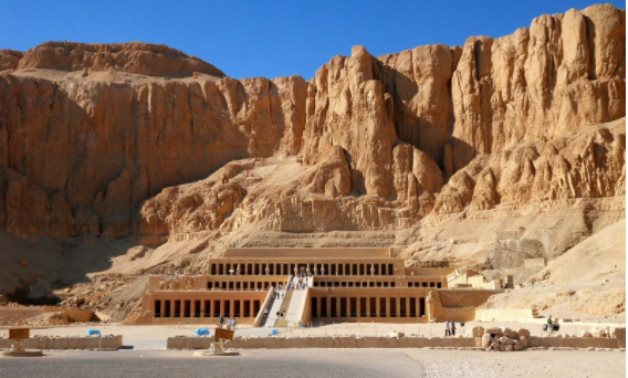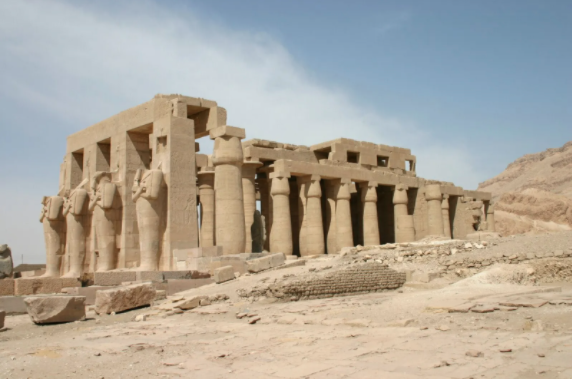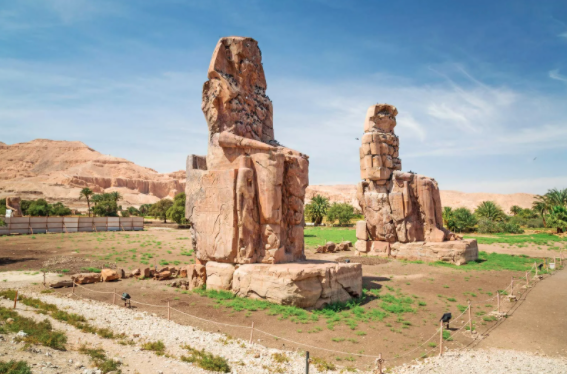
Temple of Hatshepsut at Dayr al-Baḥrī, Thebes, Ron Gatepain (A Britannica Publishing PartnerEgypt).
CAIRO – 16 February 2022: The ancient city of Thebes was one of the most important and richest cities in ancient Egypt.
For long periods of ancient Egyptian history, Thebes was the religious and political capital of the country. Thebes and its cemetery were inscribed on the UNESCO list of World Heritage Sites in 1979.

The World Heritage Site "Thebes and its Necropolis" includes several archaeological sites distributed on the Eastern and Western banks of the Nile.

The Eastern Bank includes the City of the Immortals, as well as 14 temples, the most famous of which are the Karnak and Luxor temples, according to the Ministry of Tourism and Antiquities.


As for the West Bank, which was known as the City of the Dead, it includes ancient tombs and cemeteries such as the Valley of the Kings and the Valley of the Queens, and funerary temples such as the Ramesseum, the Temple of Ramses III at Madinat Habu, and the Funerary Temple of Queen Hatshepsut in Deir el-Bahari.
Karnak Temples is the largest and most important Egyptian temple, and it was dedicated to the worship of the god Amun, the head of the holy Theban Trinity with Mut and Khonsu.
It consists of a group of temples and architectural elements built by the kings of ancient Egypt, starting from the Middle Kingdom until the Ptolemaic era. It is surrounded by a huge wall of mud bricks, and is preceded by a port to the west. Ptolemaic and Roman baths were also recently discovered in front of the first pylon.
As for Luxor Temple, it is located about 3 kilometers to the south of Karnak Temples. It was once connected by a walking path lined with sphinxes on either side. The oldest evidence of this temple dates back to the 18th Dynasty (about 1550 - 1295 BC).
Comments
Leave a Comment